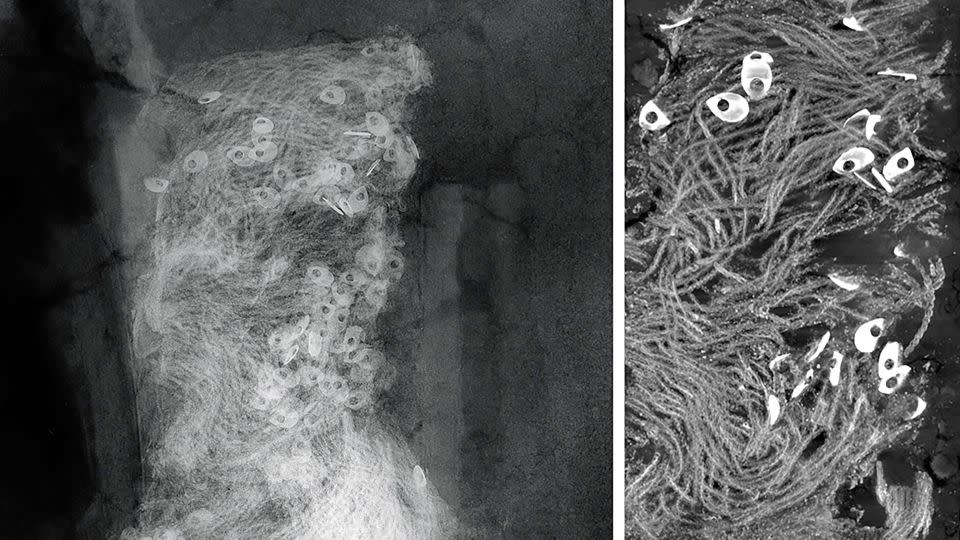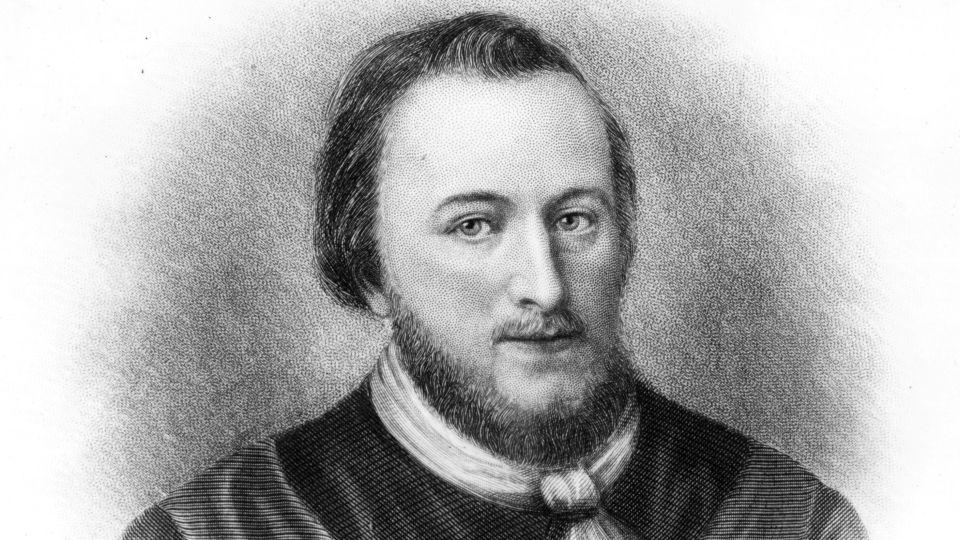Sign up for CNN’s Wonder Theory science newsletter. Explore the universe with news on fascinating discoveries, scientific advancements and more.
An investigation of human remains from the 17th century British settlement in Jamestown, Virginia, has unearthed a long-hidden scandal in the family of the colony’s first governor.
Thomas West became Jamestown’s leader in 1610; he was joined there by three of his brothers and several other male relatives. Recently, DNA analysis of two skeletons from unmarked graves in a Jamestown church revealed that both people were related to West. The DNA also showed that the men were linked by shared maternal lineage. That connection led researchers to documents proving that one of the men — Captain William West — was illegitimate, born to Thomas West’s spinster aunt, Elizabeth.
Though Captain West was raised as part of the high-status West family in England, details of his scandalous birth were deliberately stricken from the family’s genealogical records, and lingering whispers of the scandal may have been one of the factors that drove him to seek his fortune in the American colony, researchers reported August 13 in the journal Antiquity.


The findings demonstrate how genetic data in combination with other historical evidence “can help bring to light narratives that were forbidden or shameful in the past,” said Dr. Christine Lee, an assistant professor of anthropology at the University of Mississippi, in an email.
“This in turn gives us a better understanding of how individuals circumvented societal rules,” said Lee, who was not involved in the research.


Unmarked burials in colonial Jamestown
Researchers found four unmarked graves at Jamestown in 2014, in an Anglican church that the colonists used from about 1608 to 1616. Superior craftsmanship of two coffins suggested that the people they held were important members of the colony. One was even buried with a spangled military sash fringed in silver.
These burial details, along with age estimates for the two skeletons and historic documents, indicated that the remains in the better-made coffins were those of Captain West (the owner of the sash), who died in his early 20s, and Sir Ferdinando Wenman, who died at age 34. Jamestown records named both as the governor’s kin, but only Wenman’s status — as a first cousin to the governor — was described, according to the study. The relationship between Wenman and West was also unknown.


The next step for the scientists was to sample and analyze ancient DNA, or aDNA, from the skeletons, which is when the investigation made a surprising turn, said study coauthor Kari Bruwelheid, a skeletal biology specialist in the department of anthropology at the Smithsonian National Museum of Natural History in Washington, DC.
“The aDNA took us in a very unexpected direction, one we never would have gone without it,” Bruwelheid said in an email.
Matrilineal clues unravel a mystery
Degraded over four centuries, the ancient DNA was in poor shape, so the only conclusive results were in the mitochondrial haplogroup — a matrilineal part of the genome, said study coauthor Dr. Éadaoin Harney, a lecturer of human evolutionary biology at Harvard University.


While there wasn’t enough DNA to show immediate family ties, Wenman and Captain West both shared the haplogroup H10e. This commonality indicated that they were likely close relatives on the maternal side of their lineage, which surprised the study authors who analyzed the genetic data.
“They had assumed that since Captain William West’s last name was ‘West’ and that ‘West’ was the last name of Ferdinando Wenman’s mother, that their relationship would have been on the paternal lineage,” Harney said. “The ancient DNA gave the anthropologists a direction to start searching in.”
That finding guided researchers toward documents mentioning Captain West’s female relatives, which eventually led them to a previously overlooked court case from 1616, regarding the beneficiary of West’s will. He had left his belongings (including family jewelry) to Mary Blount, another aunt of the Jamestown governor. In the legal documents, the researchers found their proof: court records stated that Mary Blount had raised Captain West “on behalf of her unmarried, deceased sister, Elizabeth,” the authors reported.


“The coded language and absence of formal documentary recognition of Captain West as her son supports the illegitimate nature of his birth,” the researchers wrote.
Even though the ancient DNA was incomplete, “it did yield enough evidence to show an unexpected relationship — through their female lines,” Bruwelheid said. “That led to a real in-depth investigation into other members of the family, which led to the court case and revelation of the illegitimacy.”
Their findings confirmed that Captain West, Governor Thomas West and Ferdinando Wenman were all cousins.
Illuminating this family secret adds another layer to the story of Jamestown, the oldest English settlement in North America, said study coauthor Michael Lavin, director of collections and conservation at the Jamestown Rediscovery Foundation.
“The people who came here to forge a new life for themselves had family secrets and interpersonal drama just like we do,” Lavin said in an email. “The fact that we can reveal those secrets more than 400 years later is an incredible feat of the historical and scientific community.”
Mindy Weisberger is a science writer and media producer whose work has appeared in Live Science, Scientific American and How It Works magazine.
For more CNN news and newsletters create an account at CNN.com
